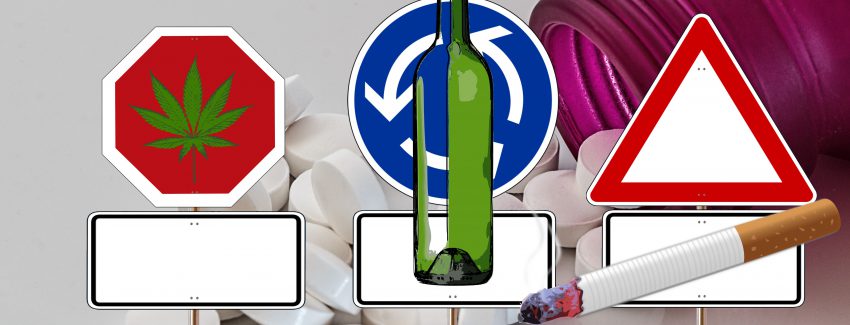This article was originally published in the MassMEP Newsletter of December 2016.
The negative impact of addictions, such as alcoholism or drug abuse, has increased in the workplace with issues ranging from lost productivity, absenteeism, injuries, fatalities, theft, and low employee morale, to an increase in health care, legal liabilities, and workers’ compensation costs.
What is an Addiction?
An addiction is a condition that results when a person ingests a substance (e.g., alcohol, cocaine, nicotine) or engages in an activity (e.g., gambling, sex, shopping) that can be pleasurable but the continued use of which becomes compulsive and interferes with ordinary life responsibilities, such as work, relationships, or health. Users may not be aware that their behavior is out of control and causing problems for themselves and others.
Costs to the Employers
According to NIDA (National Institute on Drug Abuse), alcohol abuse affects more than 23 million Americans. Only 10 percent of them get treatment. Abuse of tobacco, alcohol, and illicit drugs is costly to our nation, exacting more than $700 Billion annually in costs related to crime, lost work productivity and health care:
• Drug abuse accounts for 50% of all on-the-job accidents.
• Up to 40% employees’ theft is related to drug abuse.
• On average, employees who abuse drugs are absent from work 10 times more than non-using coworkers.
• Employees who engage in illicit drug abuse have a 30% higher turnover rate than those not engaged in drug abuse.
The Working Partners Report found the loss of money connected to drugs in the workplace occurs mainly for the following reasons:
• Workers Compensation: 38 percent to 50 percent of all Workers Compensation claims are related to substance abuse in the workplace, as substance abusers file three to five times as many Workers Compensation claims.
• Medical Costs: Substance abusers incur 300 percent higher medical costs than non-abusers.
• Absenteeism: Substance abusers are 2.5 times more likely to be absent eight or more days a year.
• Lost Productivity: Substance abusers are 1/3 less productive.
• Employee Turnover: It costs a business an average of $7,000 to replace a salaried worker.
Statistics showed that a majority of drug and alcohol abusers in the United States were employed: 75 percent of illicit drug users over 18, nearly 80 percent of binge and heavy drinkers, and 60 percent of adults with substance abuse problems (U.S. Department of Labor).
Although there is no way to know the exact figure, drug use in the workplace still appears to be a significant issue and is a growing concern for employers since many drug users, heavy drinkers, and people with substance use disorders are employed. Smaller businesses are more vulnerable to drug use in the workplace but they use drug tests less than larger businesses.
While roughly half of all U.S. workers worked for small and medium sized businesses with fewer than 500 employees, the 2007 report Worker Substance Use and Workplace Policies and Programs from SAMHSA found:
• About nine in ten employed current illicit drug users and almost nine in ten employed heavy drinkers worked for small and medium sized firms.
• About nine in ten full-time workers with alcohol or illicit drug dependence or abuse worked for small and medium size firms.
Stress and Addictions
The effects of stress can damage people’s mental and physical well-being. It is not so much that stress is bad, but that people have an inability to deal with it effectively. Most people smoke or drink alcohol to stimulate or calm themselves. They also use other products or drugs for this purpose. This type of self-medication can provide temporary relief, but is ultimately self-defeating. It can mean that the individual will have more stress in their life than ever, but they will have even less of an ability to handle it.
Nobody can eliminate stress from their lives completely. It is therefore important that they develop strategies for managing it. People can use different easy-to-use techniques so that they are better able to handle stress. The main purpose of dealing with stress is to be more objective and self-aware and not overwhelmed by emotions. Happiness is a daily accumulation of small positive emotions. On the opposite, stress is a daily transformation of negative emotions into feelings, such as fear and anxiety.
Relaxation techniques provide the body with the opportunity to let go of stress. This could include simple breathing techniques or visualization ones.
Exercise is another good way to relieve stress. This is because it increases the release of body chemicals that make people feel good. Just going for a long walk every day can be enough to keep stress levels under control.
Listening to music or spending time engaged in a hobby can also dramatically reduce stress levels.
Learning a meditation technique such as mindfulness or yoga can help. This teaches people to observe what is happening in their mind without taking it so personally. Just the simple technique of naming and observing stress can be enough to reduce it.
Practicing these techniques stills the mind and helps employees develop mental skills useful in all areas of life. It also helps to identify negative habitual thoughts and mental patterns that may be keeping employees feeling stuck and unfulfilled.
—–
Author Bio
Vincent Emery is the President of RESO Corporation, a medical group of licensed dietitians and health coaches providing programs covered by major health insurances and Medicare. RESO helps companies reduce their healthcare costs and assist their employees in achieving their health goals and work performance. Mr. Emery earned an MBA from Babson College and acquired 20 years experience in various industries, such as venture capital and manufacturing (Bosch, ABB) in the U.S. and in Europe.

